#Epic Historical Fantasy Films
Text
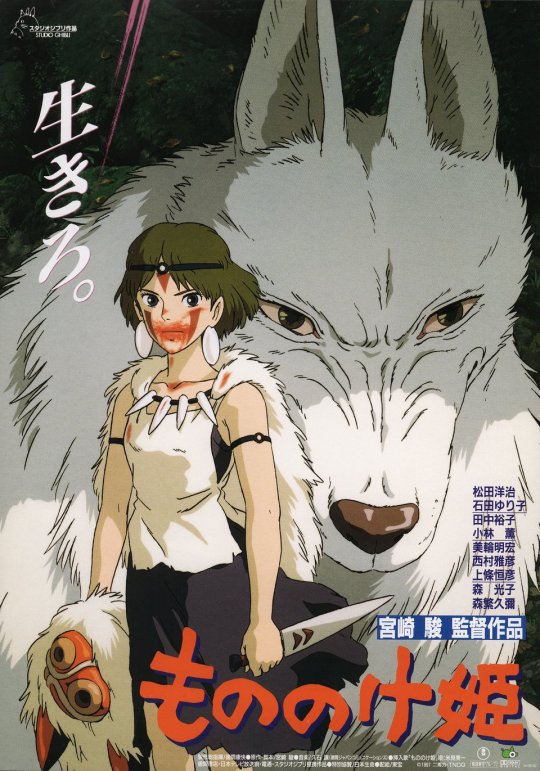
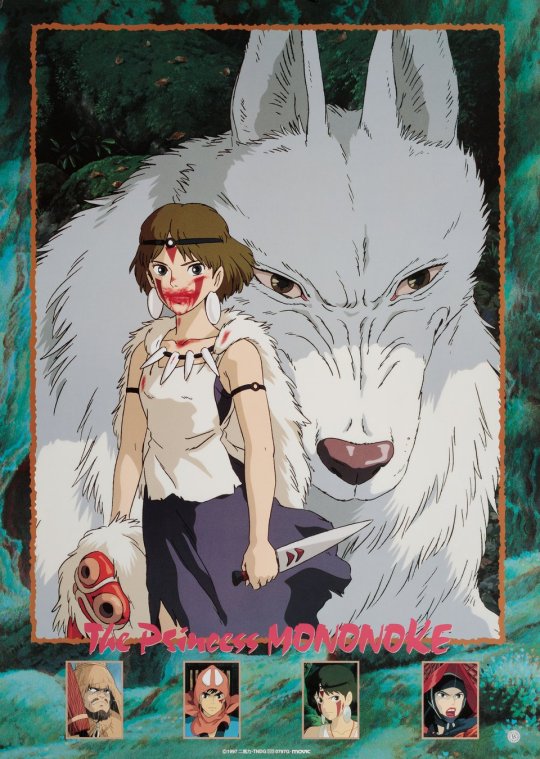
SHE WHO SPITS BLOOD AND RUNS WITH THE WOLVES -- THE WOLF GIRL PRINCESS.
PIC(S) INFO: Spotlight on an original "Princess Mononoke" (1997) Japanese B5 Chirashi handbill. A Hayao Miyazaki film.
PIC #2: A commercial poster (20x29) design, a reported "rare style," of Miyazaki's animated fantasy classic.
Resolution at 960x1350 & 960x1371.
Source: https://posteritati.com/poster/39526/princess-mononoke-original-1997-japanese-b5-chirashi-handbill (Posteritati 2x).
#Princess Mononoke 1997#Studio Ghibli#Wolf Princess#Hayao Miyazaki#Poster Art#San#サン#もののけ姫#Mononoke-hime#Wolf Girl Princess#Studio Ghibli Films#Studio Ghibli Movies#1997#Princess Mononoke 1997 Movie#Japanese Animation#Animation#1990s#San Princess of the Wolf Gods#Ghibli#San Princess Mononoke#Movie Poster#Princess of the Wolf Gods#Fantasy Films#Epic Historical Fantasy Films#Miyazaki Hayao#Princess Mononoke#Poster Design#Ghibli 1997#Ghibli films#Ghibli film
0 notes
Text
What No One Tells You About Writing Fantasy
Every author has their preferred genres. I love fantasy and sci-fi, but began with historical fiction. I hated all the research that historical fiction demands and thought, if I build my own world, no research required.
Boy, was I wrong.
So to anyone dipping their toe into fantasy/sci-fi, here’s seven things I wish I knew about the genres before I committed to writing for them.
1. You still have to research. Everything.
If you want any of your fantasy battle sequences, or your space ships, or your droids and robots, or your fictional government and fictional politics to read at all believable.
In sci-fi, you research astronomy, robotics, politics, political science, history, engineering, anthropology. In fantasy, you have to research historical battle tactics, geography, real-world mythology, folklore, and fairytales, and much of it overlaps with science fiction.
I say you *have to* assuming you want your work to be original and unique and stand out from the crowd. Fanfic writers put in the research for a 30k word smut fic, you can and will have to research for your original work.
2. Naming everything gets exhausting
I hate coming up with new names, especially when I write worlds and places divorced from Earthly customs and can’t rely on Earthly naming conventions. You have to name all your characters, all your towns, villages, cities, realms, kingdoms, planets, galaxies, star systems.
You have to name your rebel faction, your imperial government, significant battles. Your spaceships, your fantasy companies and organizations, your magic system, made-up MacGuffins, androids, computer programs. The list goes on and on and on.
And you have to do it all without it sounding and reading ridiculous and unpronounceable, or racist. Your fantasy realms have to have believable naming patterns. It. Gets. Exhausting.
3. It will never read like you’re watching a movie
Do you know how fast movies can cut between scenes? Movies can balance five plotlines at once all converging with rapid edits, without losing their audience. Sometimes single lines of dialogue, or single wordless shots are all a scene gets before it cuts. If you try to replicate that by head-hopping around, you will make a mess.
It’s perfectly fine to write like you’re watching a movie, but you can’t rely on visual tricks to get your point across when all you have is text on a page – like slow mo, lens flares, epically lit cinematic shots, or the aforementioned rapid edits.
It doesn’t have to, nor should it, look like a movie. Books existed long before film, so don’t let yourself get caught up in how ~cinematic~ it may or may not look.
4. Your space opera will be compared to Star Wars and Star Trek
And your fairy epic will be compared to Tinkerbell, your vampires to Twilight, your zombies to The Walking Dead, Shaun of the Dead, World War Z. Your wizards and witches and any whisper of a fantasy school for fantasy children will be compared to Harry Potter. Your high fantasy adventure will be compared to Lord of the Rings.
You can’t avoid it, but you can avoid doing it to yourself. When people ask about your book, let them say “oh, you mean like Star Wars” to which you then can say, kind of, except XYZ happens in my book. These IPs will never fade from the public consciousness, not while you exist to read this post, at least, but Harry Potter isn’t the only urban fantasy out there. Lord of the Rings isn’t the only high fantasy. Star Wars isn’t the only space opera.
Yours will be on the shelves right next to them, soon enough, and who knows? You might dethrone them.
5. Your world-building is an iceberg, and your book is the tip
I don’t pay for any of those programs that help you organize your book and mythos. I write exclusively on Apple Notes, MS Word, and Google Suite (and all are free to me). I have folders on Apple Notes with more words inside them than the books they’re written for.
If you try to cram an entire college textbook’s worth of content into your novel, you will have left zero room for actual story. The same goes for all the research you did, all the hours slaving away for just a few details and strings of dialogue.
There’s a balance, no matter how dense your story is. If you really want to include all those extra details, slap some appendices at the end. Commission some maps.
6. The gatekeeping for fantasy and sci-fi is still very real
Pen names and pseudonyms exist for a reason. A female author writing fantasy that isn’t just a backdrop for romance? You have a harder battle ahead of you than your male counterparts, at least in the US. And even then, your female protagonist will be scrutinized and torn apart.
She’ll either be too girly or not girly enough, too sexy, or not sexy enough. She’ll be called a Mary Sue, a radical feminist mouthpiece, some woke propaganda. Every action she takes will be criticized as unrealistic and if she has fans who are girls, they will be mocked, too.
If you have queer characters, characters of color, they won’t be good enough, they won’t please everyone, and someone will still call you a bigot. A lot of someones will still call you a bigot.
Do your due diligence and hire your army of sensitivity readers and listen to them, but you cannot please everyone, so might as well write to please yourself. You’re the one who will have to read it a thousand times until it’s published.
7. Your “original” idea has been done before, and that’s okay
Stories have been told since before language evolved. The sum of the parts of your novel may be original, but even then, it’s colored by the media you’ve consumed. And that’s okay!
How many Cinderella stories are there? How many high fantasies? How many books about werewolves and witches and vampires? Gods and goddesses and celestial beings? Fairies and dragons and trolls? Aliens, robots, alien robots? Romeo and Juliette? Superheroes and mutants?
Zombies may be the avenue through which you tell your story, but it’s not *just* about zombies, is it? It’s about the characters who battle them, the endurance of the human spirit, or the end of an era, the death of a nation. So don’t get discouraged, everyone before you and everyone after will have written someone on the backs of what came before and it still feels new.
#writing advice#writing resources#writing tips#writing tools#writing a book#fantasy#scifi#writeblr#what no one tells you about writing
1K notes
·
View notes
Note
Hi. I'm the person who asked for help with the enemy of the week type thing. I was wondering if you could explain the different types of writting? (fanfic, novella, all that stuff)
Different Types of Writing and Stories
By Word Count: *
Drabble: 100 word story
Micro Fiction: 50 to 500 words
Flash Fiction: 2000 words or fewer
Short Story: 1000 to 10,000 words
Novelette: 7,500 to 20,000 words
Novella: 20,000 to 50,000 words
Novel: 50,000 to 120,000 words
Epic Novel: 120,000 words or more
* (estimates vary)
By Type:
Poetry: literature using figurative language and crafted verse
Fan-Fiction: fiction written by fans of existing canon material ***
Diary/Journal: personal account of life experiences
Travelogue: personal account of one's travel experiences
Fiction: prose literature describing imaginary events and people
Non-Fiction: prose literature about factual events/subjects/people
Creative Non-Fiction: creative writing used in non-fiction narrative
Play: a script for a story to be performed on stage
Screenplay: TV/movie script including acting and scene directions
Technical Writing: professionally written technical information
Critical Writing: personal reviews of a product like film/food/book
Expository Writing: provides facts and research about a given topic
By Fiction Genre:
Fantasy
Sci-Fi
Adventure
Thriller
Romance
Historical Fiction
Contemporary
Children's Fiction
Dystopian
Mystery
Horror
Paranormal
*** fan-fiction can be any word count/genre
By Non-Fiction Genre:
Memoir
Humor
Travel
Self-Help
History
How-To
Motivational
Humor
Personal Development
Cookbook
Art
Family & Relationships
•••••••••••••••••••••••••••••••••
I’ve been writing seriously for over 30 years and love to share what I’ve learned. Have a writing question? My inbox is always open!
LEARN MORE about WQA
SEE MY ask policies
VISIT MY Master List of Top Posts
COFFEE & FEEDBACK COMMISSIONS ko-fi.com/wqa
885 notes
·
View notes
Text
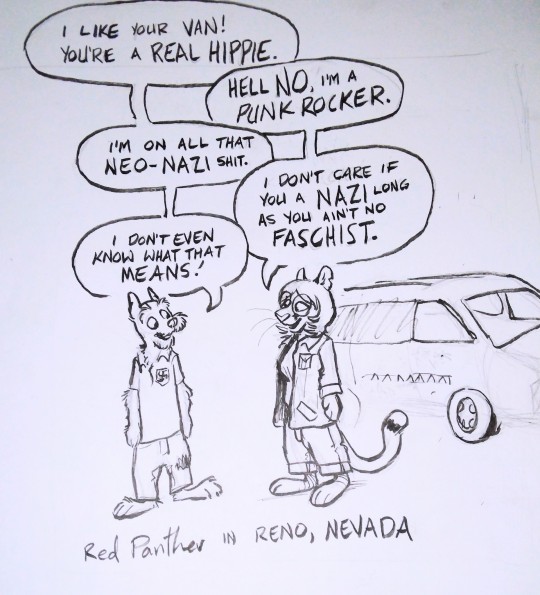
TL;DR A few homeless people you meet wear nazi symbols without even knowing what they mean. I try to be friendly to them if they seem alright because usually they are just kinda dumbasses. My dad is Jewish and he taught me to feel this way.
This is an important meeting of diplomats from extremely different cultures. I know this one will be controversial, but I'll never disrespect someone who compliments me (it's a great way to avoid fights.) A lot of street punks are only nazis because it looks cool, you just gotta show em what's cooler. My great grandfather on my Choctaw side was present for the liberation of the Dachau prison camp in Nazi Germany, and he said the most striking thing was that the guards were just as skinny as the prisoners. At the beginning of the war, prisoners were fed pretty well and even given rations of chocolate and tobacco. He thought the Germans began exterminating prisoners because they couldn't feed anyone, Jewish or white. During Nazi Germany, most white German people suffered horribly and had to eat their pets just to survive. Only a few very rich people profited, and they gained power by tricking people into hating each other. (You can also read about this in MAUS by Art Spiegelman, which is an excellent comic, a lot like mine.)
There are so many more beautiful periods of German history to celebrate, including this one happening right now! (I am Ashkenazi to those whom it may concern.) If you're more into historical stuff, the period before WWII was called "weimar," and it's commonly considered the most culturally rich period in German history - during the war, a lot of films were destroyed because the materials they were made from could be used to make explosives, and so many libraries were burned that a lot of written works were lost, but the surviving pieces of fiction are some of the greatest epic fantasy works ever written, and were heavily influential on J.R.R. Tolkien, and hundreds of modern writers. The Nazi regime damaged not just Jewish and Romani people, but German people and our world culture as a whole.
57 notes
·
View notes
Text

MY FILMS - ADULT FAME DR
REMINDER! I haven’t shifted yet, so all these is just my imagination 🤍
masterlist - main masterlist
Films are a powerful medium of storytelling and artistic expression. Combining visual, auditory, and narrative elements, films captivate audiences, transporting them to diverse worlds, evoking emotions, and sparking thought. From silent classics to cutting-edge blockbusters, the world of cinema has evolved, reflecting societal changes and pushing creative boundaries. Whether it's the magic of a well-crafted screenplay, the mesmerizing performances of actors, or the technical brilliance behind the scenes, films continue to be a dynamic and influential form of entertainment and cultural expression.
PIRATES OF THE CARIBBEAN

The "Pirates of the Caribbean" saga is a cinematic adventure like no other, immersing audiences in a world of high-seas exploits, swashbuckling action, and supernatural wonders. This beloved franchise, brought to life by the charismatic Captain Jack Sparrow, has left an indelible mark on the world of cinema.
What sets the "Pirates of the Caribbean" saga apart is its perfect fusion of thrilling action and cleverly woven mythology. From the very first installment, "The Curse of the Black Pearl," to subsequent sequels, the films have taken viewers on a journey filled with cursed treasures, mythical creatures, and, of course, eccentric pirates.
At the heart of the saga is the enigmatic Captain Jack Sparrow, portrayed brilliantly by Johnny Depp. Jack's witty charm, unpredictable antics, and ever-present quest for rum have made him an iconic character in cinematic history.
The franchise's success also lies in its ability to seamlessly blend history and fantasy. The Caribbean settings, the pirate code, and the age of exploration provide a historically rich backdrop for the fantastical elements like cursed Aztec gold, undead sailors, and mermaids.
Each film in the series has introduced new characters and expanded upon the lore, creating a vast and interconnected narrative that keeps fans eagerly awaiting the next installment.
With unforgettable moments, memorable quotes, and a score that resonates long after the credits roll, the "Pirates of the Caribbean" saga has carved its place as a beloved classic. It's a thrilling voyage into the world of pirates, where legends, curses, and epic battles reign, making it a timeless adventure that continues to captivate audiences of all ages.
BEAUTY OF THE BEAST

"Beauty and the Beast," in its live-action adaptation, breathes new life into a timeless tale that has enchanted generations. This magical film takes the beloved animated classic and transforms it into a visually stunning and emotionally captivating experience.
Set in a picturesque French village, the story follows the intelligent and kind-hearted Belle, brilliantly portrayed by Emma Watson, who longs for more than the provincial life she leads. When her father becomes a prisoner in the enchanted castle of the Beast, played by Dan Stevens, Belle courageously takes his place, embarking on a journey of discovery, love, and the power of inner beauty.
With its stunning visual effects, lavish costumes, and memorable musical score, the live-action "Beauty and the Beast" faithfully pays homage to the original while adding depth to its characters and narrative. The film not only celebrates the power of love but also explores themes of tolerance, acceptance, and the beauty that lies within.
This enchanting adaptation is a cinematic masterpiece that captures the hearts of both long-time fans and new audiences, reaffirming the enduring power of this classic tale as old as time. "Beauty and the Beast" in its live-action form invites us to be their guest in a world where magic and love flourish, reminding us that beauty truly comes from within.
LITTLE WOMEN

"Little Women" stands as a cinematic jewel, capturing the timeless essence of Louisa May Alcott's literary masterpiece. This film adaptation, directed by Greta Gerwig, breathes new life into the beloved narrative of the March sisters, presenting a fresh and poignant take on sisterhood, ambition, and the pursuit of one's dreams.
Set against the backdrop of the American Civil War, "Little Women" unfolds the lives of the four March sisters—Jo, Meg, Beth, and Amy—each with distinctive personalities and aspirations. The film gracefully weaves between the past and present, allowing audiences to witness the joys and challenges of the sisters as they navigate the trials of womanhood, love, and societal expectations.
With an all-star cast featuring Winter Reed Jackman, Emma Watson, Florence Pugh, and Eliza Scanlen as the March sisters, and an exceptional performance by Timothée Chalamet as Laurie, the film brings these iconic characters to life with depth and authenticity.
Greta Gerwig's directorial prowess shines through as she infuses "Little Women" with a contemporary spirit, resonating with modern audiences while maintaining the timeless charm of the original story. The film is a celebration of the strength, resilience, and individuality of women, urging viewers to embrace their ambitions and forge their paths.
"Little Women" is a poignant and visually captivating cinematic journey that captures the spirit of sisterhood and the pursuit of one's aspirations. It invites audiences to revisit the cherished tale with fresh eyes, offering a profound and emotionally resonant experience for both new and devoted fans of this literary classic.
KNIVES OUT

"Knives Out" is a modern masterpiece in the realm of whodunits, a brilliantly crafted film that masterfully blends mystery, humor, and a star-studded ensemble cast. Directed by Rian Johnson, this murder-mystery film takes audiences on a rollercoaster ride of suspense, twists, and dark humor.
The story centers around the death of wealthy crime novelist Harlan Thrombey, portrayed by Christopher Plummer. When renowned detective Benoit Blanc, played by Daniel Craig, is enlisted to investigate, the Thrombey family becomes the focal point of scrutiny. With each member harboring secrets and motives, the plot thickens, and the suspense escalates.
"Knives Out" boasts a stellar cast including Daniel Craig, Winter Reed Jackman, Chris Evans, Jamie Lee Curtis, and more, each delivering standout performances that contribute to the film's gripping atmosphere. The narrative is cleverly layered, keeping viewers on the edge of their seats as they attempt to unravel the intricate web of deception and motive.
Beyond its gripping storyline, "Knives Out" is a sharp and satirical take on family dynamics, privilege, and the consequences of wealth. Rian Johnson's expert direction and sharp dialogue elevate the film, making it a delightful homage to classic whodunits while infusing it with a contemporary edge.
This cinematic gem not only keeps the audience guessing until the very end but also provides a fresh and entertaining perspective on the murder mystery genre. "Knives Out" is a clever and stylish film that engages the mind, tickles the funny bone, and ultimately leaves a lasting impression, establishing itself as a standout in the pantheon of modern cinema.
TOP GUN: MAVERICK

"Top Gun: Maverick" is a highly anticipated sequel that soars into the iconic world of fighter jets and high-stakes aerial combat. Directed by Joseph Kosinski and starring Tom Cruise reprising his role as Pete "Maverick" Mitchell, this film is a thrilling continuation of the 1986 classic, "Top Gun."
Set decades after the events of the original film, Captain Maverick finds himself adapting to a new era of aerial warfare dominated by drone technology. As he mentors a new generation of Top Gun graduates, the film promises heart-pounding dogfights, cutting-edge aviation sequences, and a nostalgic nod to the beloved elements that made the first film an enduring favorite.
"Top Gun: Maverick" not only reintroduces fans to the adrenaline-fueled world of fighter pilots but also introduces fresh faces played by actors like Miles Teller and Winter Reed Jackman. With its combination of high-octane action and character-driven storytelling, the film aims to capture the spirit of the original while propelling the narrative into uncharted skies.
As Maverick confronts his past and embraces the challenges of the future, the film offers a blend of nostalgia and innovation, promising an exhilarating cinematic experience for both longtime fans and a new generation of moviegoers. "Top Gun: Maverick" is poised to be a blockbuster that reignites the Maverick legend while delivering a visual spectacle that takes the iconic franchise to new heights.
THE SEVEN HUSBANDS OF EVELYN HUGO

"The Seven Husbands of Evelyn Hugo" unfolds on the silver screen as a spellbinding cinematic journey through the glitz and glamour of Hollywood's Golden Age. Adapted from Taylor Jenkins Reid's compelling novel, this film invites audiences into the captivating life story of Evelyn Hugo, a legendary film actress portrayed with brilliance and nuance.
In the film, we follow Evelyn's journey through the decades, beautifully capturing the essence of old Hollywood. The glamorous sets, meticulously crafted costumes, and evocative cinematography transport viewers to a bygone era where stars shone brightly on and off the screen.
As the narrative unfolds, the complexities of Evelyn’s seven marriages come to life, each husband portrayed by a stellar cast that adds depth to the character-driven drama. The film navigates the twists and turns of Evelyn’s life, revealing secrets, scandals, and the sacrifices made in the pursuit of fame and love.
The storytelling prowess of Taylor Jenkins Reid is masterfully translated to the screen, with Evelyn's compelling voice narrating her journey. The film seamlessly weaves together themes of identity, love, and the price of success, creating an emotional tapestry that resonates with audiences.
While exploring the intricacies of Evelyn's life, the film introduces Monique Grant, the journalist chosen by Evelyn to tell her story. Monique's personal journey becomes an integral part of the cinematic narrative, adding layers of depth and connection to the overarching tale.
"The Seven Husbands of Evelyn Hugo" on the big screen is more than a glamorous expose of Hollywood excess; it's a poignant exploration of the human experience. The film's rich storytelling, combined with outstanding performances and lush visuals, elevates it beyond a mere adaptation, making it a cinematic triumph that lingers in the hearts of viewers long after the final credits roll.
#shifting realities#adult fame dr#desire reality#fame dr#fame dr shifting#shifting#actress#actress dr#actress shifting#pirates of the caribbean#films#film industry#johnny depp#beauty and the beast#emma watson#little women#florence pugh#knives out#chris evans#ana de armas#top gun maverick#top gun#top gun films#rooster#maverick#tom cruise#miles teller#bradley rooster bradshaw#the seven husbands of evelyn hugo#evelyn hugo
62 notes
·
View notes
Text
Books to read in autumn
Historical novels
Wolf Hall by Hilary Mantel: England in the 1520s
The Pillars of the Earth by Ken Follett: Building the most splendid Gothic cathedral the world has ever known
Outlander by Diana Gabaldon: A back-in-time Scottish romance
Company of Liars by Karen Maitland: A novel of the plague in the year 1348
The underground railroad by Colson Whitehead: Enslavement of African Americans through escape and flight
The God of small things by Arundhati Roy: A family drama in the 60s located in India
The Diary of a Young Girl by Anne Frank: A powerful reminder of the horrors of world war II
Fantasy
A Game of thrones by George R. R. Martin: A Fantasy epic run by politics, strong families, dragons
Red rising by Pierce Brown: A dystopian science fiction novel set in a future colony on Mars
Babel by R.F. Kuang: Student revolutions, colonial resistance, and the use of language and translation as the dominating tool of the British empire
Legends & Lattes by Travis Baldree: A fresh take on fantasy staring an orc and a mercenary
Jade City by Fonda Lee: A gripping Godfather-esque saga of intergenerational blood feuds, vicious politics, magic, and kungfu
Spinning Silver by Naomi Novik: A tale of hope and magic, with brave maidens and scary monsters
The Atlas six by Olivie Blake: A dark academic sensation following six magicians
Mysteries & Horror
The Gathering Dark: An Anthology of Folk Horror by various authors: Short stories perfect for the Halloween mood
Sorrowland by Rivers Solomon: The story of Vern, a pregnant teenager who escapes the cult Cainland
The Weird and the Eerie by Mark Fisher: A noted cultural critic unearths the weird, the eerie, and the horrific in 20th-century culture through a wide range of literature, film, and music
Holly by Stephen King: Disappearances in a midwestern town
Vampires of El Norte by Isabel Cañas: Supernatural western
The good house by Tananarive Due: A classic New England tale that lays bare the secrets of one little town
Nonfiction
Ghostland: An American History in Haunted Places by Colin Dickey: The trail of America's ghosts
What moves the dead by T. Kingfisher: A gripping and atmospheric retelling of Edgar Allan Poe's classic "The Fall of the House of Usher
South to America: A Journey Below the Mason Dixon to Understand the Soul of a Nation by Imani Perry: A journey through the history, rituals, and landscapes of the American South—and a revelatory argument for why you must understand the South in order to understand America
All the living and the dead by Hayley Campbell: An exploration of the death industry and the people―morticians, detectives, crime scene cleaners, embalmers, executioners―who work in it and what led them there
Gödel, Escher, Bach: An Eternal Golden Braid by Douglas R. Hofstadter: Gödel, Escher, Bach is a wonderful exploration of fascinating ideas at the heart of cognitive science: meaning, reduction, recursion, and much more
#autumn mood#writing#inspiration#history#autumn#fall season#autumn leaves#autumn aesthetic#dark fantasy#dark academia#books and reading#books#books & libraries#bookstagram#currently reading#booklr#reading#book recommendations#writingcommunity#creative writing#writeblr#fall vibes#october#autumn vibes#historical novel#fantasy#fairy tale#fantasy reader#nonfiction#mystery
95 notes
·
View notes
Text
Zack Snyder’s 2007 fantasy historical film, 300, has probably made the Battle of Thermopylae one of the most famous battles of the ancient world.
16 notes
·
View notes
Text
Mile & Apo: It takes two to triumph
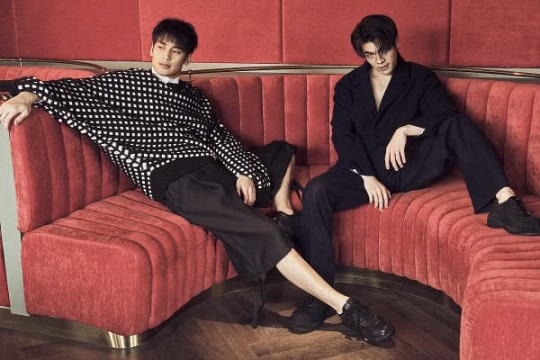
IN THE GLITZY REALM OF entertainment, where talent often shines like a beacon, there occasionally emerges a pair of stars whose chemistry transcends the screen. Such is the case with Mile and Apo, two charismatic Thai actors whose TV show KinnPorsche has become a global sensation, watched by millions of viewers from Russia and India, to Poland and Peru.
The two have risen from relative obscurity to become the new ambassadors of Dior, mobbed by teenage girls when they arrived in Mumbai earlier this year to attend a Dior fashion show.
On the surface, the Thai series KinnPorsche seems to have thrown the rulebook of “How to make a hit TV show” out the window. It is a mafia story filled with surly men, bloody gang fights and epic shoot-outs – which, yes, is a mainstay of TV programming. But the radical twist is this: the two main characters are a mafia boss’ son (played by Mile) and his male bodyguard (played by Apo) who – surprise, surprise – fall in love with each other.
In the history of TV, there has never been a hit crime series centred on a gay plot. But when KinnPorsche debuted in April 2022 on Thai TV and global streaming service iQiyi, it almost instantly became the top trending title in neighbouring countries such as Singapore, Indonesia, Malaysia, Vietnam and the Philippines.
Soon after, it claimed Europe, finding particular popularity in Poland, Turkey, Italy and France. Then it stormed its way into North and South America, where it was a top trending topic in the US, Mexico, Brazil, Argentina, Ecuador and Colombia.
No one – not even the cast and producers – thought the show would be this successful. It seems to have fed into some untapped market for female audiences who love action shows, but don’t care to see yet another threateningly perfect actress couple up with their fantasy man.
If you ask any fan what it is about the show that makes them sweat, swoon or quiver with delight, they’ll answer quite simply: Mile and Apo.
Double or nothing
At their photo shoot in Bangkok’s top restaurant Nusara, which overlooks the splendid temple complex Wat Pho, the models-turned-actors are in their element. They tailor their bodies and facial expressions instinctively for the camera, conveying a range of emotions, from sultry and mysterious to bright and playful. The slinky Dior suits, with their clean lines and minimal embellishments, don’t hurt either.
Mile (or Phakphum Romsaithong) and Apo (or Nattawin Wattanagitiphat) recently released their new film Man Suang in cinemas. It is a big-budget political thriller set during the 19th century reign of Rama III, replete with historically authentic sets and costumes.
Apo plays a traditional dancer who is recruited to spy in an elite club and uncover a plot to overthrow the order of the king. Finding a kindred spirit in the club’s taphon drummer (played by Mile), the two team up to stop the underground rebellion.
Speaking with the help of a translator, Mile, 31, explains: “We hope the movie reaches out to a wide audience. We wanted it to have both commercial and critical success, something that could show Thai history and culture to the world, but also be fun and entertaining enough to be a popcorn movie for the masses.”
Both actors note how T-pop (the shorthand for Thai popular entertainment) has been hyped as the next global sensation after K-pop and J-pop, following the massive success of Thai stars such as Lisa Manobal, Bright Vachirawit and Win Opas-iamkajorn.
“And it can happen,” says Apo, 29, also through a translator. “Thai people are very humble, gentle, hardworking and friendly. We can blend into any culture. If anything, Thailand has served as a melting pot for different cultures – just as Singapore has. Our culture can be easily embraced by the world.”
The duo believes that the global audience has transformed in recent times. “They’re now more welcoming of stories from different parts of the world, especially if those stories involve characters going on a journey to discover themselves and make themselves better, stronger, wiser and happier,” says Apo. “That’s why when I look for new projects these days, I look for the ones that carry the messages of self-actualisation.”
Mile concurs, adding: “I’ve always believed in ‘high risk, high return’. KinnPorsche was a risky proposition, because it took a mafia crime genre and placed it in the Boy Love category (a niche genre involving gay romance). But I believed in the project’s potential from the start – even if I never thought it’d become the cultural phenomenon that it is today. Its success has only strengthened my belief in ‘high risk, high return’.”
One-two punch
The road to success has been winding for both actors. Though born with the magnetic allure of leading men, they’ve had to work hard to secure roles over countless rivals, as strikingly handsome as they are. Having appeared in smaller parts before, it was the smash success of KinnPorsche – a show that almost didn’t get made because of funding issues – that catapulted them into not just the Thai limelight, but the global stratosphere.
Asked what Dior’s artistic director Kim Jones thinks of KinnPorsche, the duo laughs. Apo says: “We don’t know if he’s seen the show – we didn’t ask him. But we do know that our fans had been bombarding his Instagram account for a while, telling him about us, asking him to check us out, before he signed us up – well, at least that’s what he told us when we met him for the first time.”
“But for all you know, he could be binge-watching the series right now,” quips Mile, prompting another round of chuckles.
As the two men trade jokes in Thai, it’s clear that they share a genuine friendship. Their camaraderie is palpable, adding an extra layer of authenticity to their on-screen chemistry. Their behind-the-scenes antics and playful banter in candid posts have become fan fodder, launching thousands of TikTok videos and memes.
Mile says: “We’ve only become better friends in these past two-and-a-half years. We’ve become more synchronised, and our mindsets and energies are moving at the same pace. I can look at Apo and more or less understand what’s going on in his mind. We have small conflicts, of course – it’s normal among friends – but it’s usually something so minor, we can resolve it quickly.”
The best part of their friendship? Their shared love of dad jokes – that genre of silly, cheesy jokes with predictable punchlines that fathers supposedly love to tell their kids.
But Mile confesses: “I don’t tell dad jokes because I like them, to be honest. What I really, really want to tell are smart jokes, witty jokes… But I’m so bad at making jokes that they always come across as dad jokes, no matter how hard I try.”
Apo interjects: “Do you wanna hear a good dad joke?” Then, switching from Thai to halting English, he says slowly: “Hey you… watch where you walk… or you will… fall… into… my heart.”
53 notes
·
View notes
Text
Foreign Films to Expand Into
I saw a post regarding the writer’s strike that suggested Americans maybe make the effort of watching a foreign film, and while I agree, I didn’t think its tone was super helpful. Don’t get me wrong, I’m the queen of “Pull yourself out of a rut!!” but I don’t think “Americans are so fucking stupid they don’t realize other countries make movies” is actually trying to help anyone, so much as add to the idea that I guess the rest of the world is being forced to watch Captain America at gunpoint.
But I DO want Americans to watch foreign films, in the same way that I want them to watch indie films, and I want people of all nations and stripes to expand their understanding of what they’re used to, to push themselves into something else they might like. I think my family would say that it’s fair to call me a person who is open to experience. I love to try things! That’s why I have the book draw, that’s why I go see movies I’m not sure about, that’s why I actively seek out foods I’ve never tried. You deserve to make your life interesting, to be challenged, to provide enrichment in your enclosure. You are worth the effort of a richly textured life! And movies are often a pretty cheap way to go about stepping outside of your comfort zone. I can’t wait to hear what you thought of any of these!
Obviously, if you are not American, one of these may not be foreign to you. Yes, I know that.
I don’t hold out that all of these are hidden gems--some of them are, or were, extremely popular movies. Many of them won awards. But I do hold out that these are some of my favorites, and I would love to share them with you. I did, however, try to avoid anything that I thought already got a lot of play on tumblr: I don’t need to tell anyone here to watch Parasite, Portrait of a Lady on Fire, or any given Ghibili movie (Though you should watch Grave of the Fireflies--it’s my favorite).
Pan’s Labyrinth (Mexico and Spain): This is my favorite foreign film of all time and I am breaking my, “I’m not putting any movie on here I don’t need to tell you to watch” rule right away because it is in fact one of my favorite movies of all time, American or foreign. It is a lush story about fantasy, facism, courage, and the horror of childhood. Warning: This movie is very very intense. Do not be fooled by the fact that Del Toro also does like fucking…Hellboy. He also can make very serious, very good movies, and he does not shy away from the brutality of the Spanish Civil War. If you liked Labyrinth but you’re fully grown now and I want a story about fantasy bargains for the adult crowd, this is for you.
The Orphanage (Spain): I love Spanish horror, and so it was really, really difficult to only pick one. But this has been one of my favorites for years, a classic Spanish slow burn that deals with the long shadow of childhood and the line between the supernatural and the natural. If you like pensive horror movies like The VVitch, I really think you should give this one a try.
Hero (China): I know a lot of y’all are into wuxia now, but back when this came out it wasn’t a thing I had ever heard of*. Hero is, as the title might imply, a sweeping historical epic with fantastic fight scenes and gorgeous cinematography. If you enjoy stories told in multiple interpretations, high-flying wire work, and with some ideas about war, peace, and truth that tempt without asking too much of you, you’ll love this.
Cold War (Poland): Listen, I love Cuarón, Mexican and Spanish movies absolutely dominate my list of foreign films I’ve watched, but I genuinely thought Cold War deserved the edge over Roma for the Oscar that year. It’s a fairly short movie for the times, coming in at less than 90 minutes, and it wastes not even one second of that film time. Cold War is a bittersweet love story not only with two people toward each other, but feels deeply critical of Poland while recognizing the impossibility of unbraiding yourself from it. If you love impossible, bittersweet, happily never after love stories with stark and striking cinematography, you’ll adore Cold War.
Tigers Are Not Afraid (Mexico): I adore an unflinching take on childhood, and this movie is absolutely that. It essentially asks, “How do children survive in a world full of trauma?” and the answer is that sometimes, they don’t. This movie is a little frenetic, admittedly, but the ways fantasy and imagination is woven into a group of street children orphaned by the cartels is something I haven’t been able to stop thinking about since I first saw it, and I think the final shot is pitch perfect. If you liked Pan’s Labyrinth this is required viewing, as I think it shares a lot of themes.
The African Doctor (France): “Holligay, if you put another fucking downer movie in this list I am going to BEAT YOUR ASS” Okay, okay, we’re going to ignore my general predilections and everything from here on down is fairly life-affirming or comedic or easy. This is about a little village in France in the 1970s that gets an African doctor. It’s sweet, and funny, and you come away from it feeling good. Also I still laugh every time Seyolo responds to the fact that most of the villagers had never seen a black person with: “So what? Now they will.” If you like sweet fish out of water stories with nice endings, this is for you.
Om Shanti Om (India): I maintain that this is the best movie to watch if you’re brand new to Bollywood. It mostly avoid the worst of its excesses while delighting in all of its strengths. It is a genuinely fun film with fantastic songs, and a shockingly together storyline for a Bollywood movie (affectionate). I’ve actually done a full review of this one, but in the short version: If you loved Moulin Rouge and wanted more of that mix of tragedy and silliness on a operatic level, I think you’ll be in for a treat.
The Warrior’s Way (South Korea and New Zealand): Okay, this movie is not good, and also it manages to be bad. But it’s in English, so if you’ve been sitting there like my dad going, ‘I am not gonna read a movie” well, here you go. If you’ve ever said to yourself, “I want to watch a Western, but I wish it were actually a HK style cheesy action movie” BOY HOWDY AM I HERE FOR YOU. I watched this one insanely drunk and still managed to be like, “wow! This is so bad! Maximum valid!” If you thought RRR** was good, but too deep, you will have the BEST time with The Warrior’s Way.
Anyway, this is, of course, an incomplete list, and I’m sure I’ve forgotten something I love, since this was just made off the cuff. I would love to hear if you watch or like any of these, and also, if, looking at this list, you have a recommendation for me, let me know! There are so so many fucking movies out there, and so many fall through the cracks.
I’m thinking about doing another one of these on “Indie movies you might have missed” and also “Movies that were made before you enfants were born” (30+ years) so let me know if anything like that is interesting! Or, if there’s a category you think I might know about you’re into, let me know also.
*I actually have a lot of emotional attachment to Hero, as I have a very distinct memory of standing in the Hastings, in front of the small foreign-film section, and it being the first foreign film I picked up. I was, I think, sixteen, and I had decided that I was going to be worldly, and interesting, and cultured, and so I took a deep dive into cooking from other cultures, and watching foreign films, and buying old art history textbooks, reading classics, and listening to opera, and formal manners. Basically becoming the person I wished I were, that poised Grace Kelly type, even if I was born to the drone of the grasshoppers on the wind. To quote Reba Macintire, “You know I mighta been born just plain white trash, but Fancy was my name” and all that. And this movie was a distinct part of that, in that it was the first, in a long line of me trying to be a more well-rounded and interesting person.
**RRR (India): Actually on that note, watch RRR. It’s a fantastically fun Indian action film that I keep meaning to watch again because I got a little too drunk for drinking on an emopty stomach the first time I saw it, so it might actually also be good, but I do remember enjoying the shit out of it and there is a scene that has such Fareeha vibes to me.
61 notes
·
View notes
Text
Deep dives into folklore: German folklore
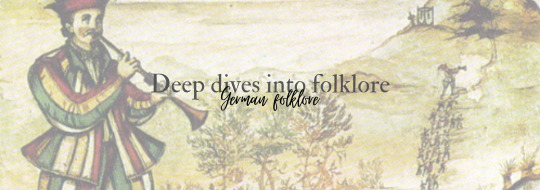
Embedded within the cultural fabric of Germany lies a trove of enchanting narratives, a testament to the nation's rich heritage and historical tapestry. German folklore, a captivating blend of ancient pagan beliefs, medieval epics, and timeless fairy tales, unveils a world steeped in myth and tradition. This essay embarks on a comprehensive exploration of German folklore, tracing its origins, introducing mythical figures, unraveling folk traditions, and assessing its profound influence on literature and popular culture. Within this intricate tapestry, the diverse tales of Germanic lore reveal not only the evolution of storytelling but also the enduring spirit that continues to captivate audiences across time and borders.
I. Ancient Roots and Pagan Influences:
Germanic folklore has its origins in the pre-Christian beliefs of the Germanic tribes. The pantheon of gods and goddesses, such as Woden (Odin), Thor, and Freyja, held sway over the imaginations of early Germanic people. The Eddas, epic poems preserved in Iceland, provide glimpses into the cosmology and mythology of the Germanic peoples, offering tales of creation, heroic exploits, and the prophesied end of the world, Ragnarök.
II. Germanic Mythical Figures:
The Nibelungenlied: The Nibelungenlied, a medieval German epic, tells the tragic tale of Siegfried, the dragon-slayer, and the curse surrounding the Nibelung treasure. This epic, with its themes of heroism, betrayal, and revenge, has left an indelible mark on German folklore and is a precursor to later literary works, including Wagner's operatic adaptation, "Der Ring des Nibelungen."
Brothers Grimm Fairy Tales: Perhaps the most famous collectors of German folklore, the Brothers Grimm, Jacob and Wilhelm, compiled a vast collection of fairy tales that have become timeless classics. Stories like "Cinderella," "Snow White," and "Hansel and Gretel" are embedded in global consciousness, showcasing the enduring appeal of German folk narratives.
III. Folk Traditions and Creatures:
German folklore is teeming with a diverse array of folk traditions and mythical creatures, each with its own regional variations. From benevolent spirits to malevolent beings, these entities populate the cultural landscape of Germany.
Kobolds and Elves: German folklore features kobolds, mischievous household spirits, and elves that are often associated with forests and natural landscapes. These beings, sometimes helpful, sometimes capricious, embody the close connection between the Germanic people and their natural surroundings.
The Lorelei: Along the Rhine River, the Lorelei is a legendary siren or mermaid who lures sailors to their doom with her enchanting song. This myth has inspired numerous poems and songs, becoming a symbol of the dangers and allure of the river.
IV. Impact on Literature and Popular Culture:
German folklore has left an indelible mark on literature and popular culture, both within Germany and globally. Beyond the Brothers Grimm's fairy tales, Germanic mythology has influenced literary giants like J.R.R. Tolkien, whose Middle-earth draws inspiration from Norse and Germanic mythologies.
Wagner's Operas: Richard Wagner's operatic masterpieces, including "Der Ring des Nibelungen" and "Tristan und Isolde," draw heavily from Germanic mythology. Wagner's reinterpretation of these myths has become iconic in the world of classical music and opera.
Contemporary Fantasy: German folklore continues to influence contemporary fantasy literature and film. Authors and filmmakers often draw on Teutonic themes to create worlds filled with magical creatures, quests, and epic struggles between good and evil.
German folklore stands as a testament to the enduring power of storytelling in shaping cultural identity. From ancient pagan beliefs to the enchanting tales of the Brothers Grimm, the narratives of German folklore have transcended time, leaving an indelible mark on literature, art, and popular culture. As these tales persist and evolve, they provide a window into the collective imagination of the Germanic people and invite ongoing exploration and reinterpretation in the ever-changing landscape of global storytelling.
Taglist (reply or reblog to be added): @axl-ul @crow-flower @thoughts-fromthevoid @alderwoodbooks @harleyacoincidence @tuberosumtater @sonic-spade @theonlygardenia @holymzogynybatman @nulliel-tres @w0rkah0licz @sylvanthorn @tigertaurus22 @profiterole-reads @mathias-musings @1899adgg1997tbmd @grimmparanormalinvestigations
#writeblr#writers of tumblr#writing#bookish#booklr#fantasy books#creative writing#book blog#ya fantasy books#ya books#writers block#national novel writing month#writers#teen writer#tumblr writers#writblr#writer problems#writerblr#writers community#writers corner#writers on tumblr#writerscommunity#writerslife#writing blog#deep dives into folklore#deep dives#german folklore#german mythology
21 notes
·
View notes
Text
Black Sails: 13 Facts About The Starz Hit Worth More Than Stolen Treasure

BY ERICH B. ANDERSON/DEC. 31, 2022 1:15 PM EST
With contemporary series like "Vikings" and "Game of Thrones," "Black Sails" may often be overlooked when compared to other epic dramas of the 2010s, which makes it one of the most underrated shows of the decade. Not only is the scale of the pirate adventure immense with many scenes taking place upon impressive naval vessels, but the political intrigue and intimate interactions of the characters make it an entertaining watch for several different audiences.
The show as a whole does a brilliant job of mixing fiction with historical figures like the notorious pirate captains Blackbeard (Ray Stevenson) and Charles Vane (Zach McGowan) whose lives were so legendary that they verge on fantasy. But at its core, the story centers on the complicated friendship between its two main characters, Captain Flint (Toby Stephens) and his deviously clever quartermaster, Long John Silver, in the years before their sagas are continued in the later tale of "Treasure Island." For a series devoted to such larger-than-life individuals, the making of it also had its fair share of epic details and moments as well, which you can enjoy reading below.
The series is an unofficial prequel to Treasure Island

Although "Black Sails" is its own story for the most part, from the very beginning it was always meant to show the events building up to the classic work of fiction "Treasure Island" by Robert Louis Stevenson. More than anything, the creators of the series wanted to tie up loose ends to the famous tale and give their explanation to who the characters were up to in the years before, as showrunner Jonathan Steinberg explained to Entertainment Weekly: "At the end of the book, it's recounted by other people that Captain Flint died in Savannah alone, which begs a lot of questions."
Flint's origin is certainly not the only one covered with both Long John Silver's and Billy Bones' backstories explained thoroughly as well. For Billy especially, his situation in the finale of the series gives all new meaning to what happens to him later in the novel. Steinberg added: "It is clear we are suggesting he is on 'Treasure Island,' which I think has a number of implications if you go back and read the book."
After four seasons, it is clear the showrunner was pleased with how the series handled the continuity, saying: "It felt like we had finished the argument a little bit, in terms of connecting it not just to 'Treasure Island,' but to our contemporary understanding of what piracy was, about what Caribbean piracy was."
2. The opening credits features the hurdy-gurdy
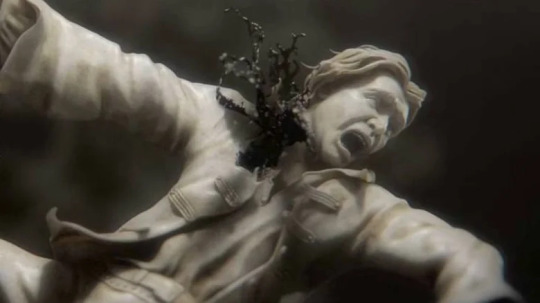
Several aspects of "Black Sails" make it stand out as a particularly fascinating TV series, with one of the top being its unique theme music in the opening credits. Not only is the memorable tune composed by the talented Bear McCreary who is well known for his work on "The Walking Dead" and "Battlestar Galactica," but it also features quite an unusual instrument known as a hurdy-gurdy, according to Entertainment Weekly.
Also known as a wheel fiddle, the hurdy-gurdy is a folk instrument that has existed for around 1,000 years and is played to this day all over Western Europe, from Italy to England. In a 2010 TED Talk, musician Caroline Phillips explained that the complex and bulky device originally required two people to operate it until the design was improved a few centuries later, so it could be used by a single performer. Although a fundamental part of the instrument is the strings, akin to a violin, the sound produced can also be compared to bagpipes.
3. The show was filmed in South Africa

While "Black Sails" takes place predominantly in the Caribbean, that was not the place chosen to film the epic pirate drama. Instead, the Starz network went with the fairly new Cape Town Studios for the production, and needless to say that the South African-based company was ecstatic over the decision. Ahead of filming Season 1, Film Afrika producer Vlokkie Gordon said: "We are delighted to have been awarded ['Black Sails'] and it is further proof of South Africa's international reputation for outstanding production skill and expertise" (via The Location Guide). Gordon continued: "A production of this scope provides not only employment for South Africans, but also skills transfer which is in line with Film Afrika's policy of supporting growth and development of the South African film and television industry."
The swashbuckling series was then added to the growing list of productions shot out of Cape Town, including "Safe House," "Chronicle," and "Mad Max: Fury Road," as per the Cape Town Film Studios website. Plus, another Starz series benefited greatly from the elaborate ship sets built there, with "Outlander" using the Jamaican landscapes in its third season, according to Entertainment Weekly.
4. 300 people worked on the pirate ship

The impressive sailing vessels featured in "Black Sails" are almost as important to the story as the characters themselves. Therefore, a ton of work was put into the construction of the sets in order to make the maritime setting feel real for the cast, and more importantly, the audience. In a behind-the-scenes clip shared by Starz, senior rigger Joel Yates explained: "The carpenters building the boat it took them, I think, four or five months. They want it to look as authentic as possible because what we've built is a very accurate replica of a sailing ship."
The end product, called The Walrus in the show, was massive as well, as Yates revealed that the full ship is approximately 140 feet long. And to pull off such an incredible feat, it took a gigantic crew with various skill sets, as construction coordinator Clive Pollack shared: "There are 300 people working on the boat. There are carpenters, sculptors, painters, riggers, sailmakers."
5. There were no bathrooms for cast and crew on the ship
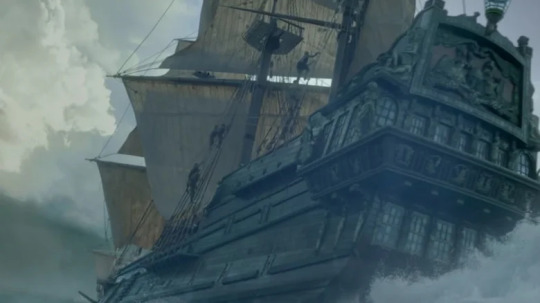
For as grand as the prominent pirate ship is in "Black Sails," it does have its faults as it also serves as the set of a modern TV production. In a 2016 interview with Den of Geek, actor Zach McGowan revealed the biggest problem for the cast and crew on set: "The hardest thing about the ships, most people don't realize, is just when you're on the ship at the top of the deck somewhere, it's very far to the nearest bathroom. There's no bathroom on the ships."
Even with that minor complaint, McGowan went on to stress that being on the deck of the ship at sea was such a great experience that the actor wished he had more of those scenes. It's also his opinion that most of the cast felt the same way, except possibly the ones who spent the most time on board, such as Toby Stephens.
6. The actors went through pirate boot camp

Like most epic dramas featured on premium channels, "Black Sails" is filled with massive battle sequences, in this case often between rival pirate clans, or against the relentless forces of the British and Spanish empires. While the nature of naval warfare means that a good amount of these conflicts are long distance, yet devastating, as cannonballs attempt to rip enemy vessels apart, much of the brutal combat is at close quarters.
All of the fight scenes in the series are quite impressive, so it makes sense that many cast members received special training. In a Q&A with a few of the main actors, shared by Starz in 2015, Luke Arnold revealed: "We all went through a three-week pirate boot camp. Well, the pirates of the crew did at the beginning of shooting." And it was a good thing that they did because when asked if they could survive the rough conditions of the time period, the general consensus was an adamant no. Toby Stephens then elaborated with a laugh: "The real trouble, I'd be ok on Nasau, it was as soon as I'd get on a boat and I had to sail anywhere."
7. Clara Paget came up with Anne Bonny's distinctive look
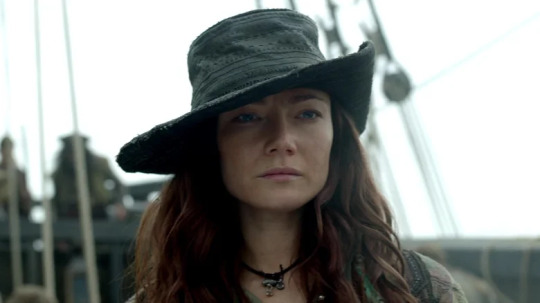
From Charles Vane, Edward Teach, and Jack Rackham to Captain Flint, Long John Silver, and Billy Bones, "Black Sails" has all sorts of characters based on either historic people or from the famous fictional tale, "Treasure Island." Therefore, both the writers of the show and the actors who portrayed these popular figures had to work with what was already known about them. But at the same time, there was a lot of creative freedom as well.
A somewhat minor, though fascinating aspect of another one of these real characters in the series, Anne Bonny, was thought up by actress Clara Paget. In a 2016 interview with Den of Geek, when asked what she contributed to the role, the actress replied: "I suppose the hat. That came completely organically. I tried on this hat and then I was pulling it down in an almost jokey way, like an old-school Western. Then it became who she is, hiding behind this hat. It really works for the character because, as I said, it shows this vulnerable side at the same time as being a badass through one side or the other. Like schizophrenic, bipolar."
8. Zack McGowan broke a stuntman's jaw by accident

A major reason that the fight scenes in "Black Sails" are so good is because of the enthusiasm of the cast and crew when filming, yet there was one time that may have gone a little too far. When a stuntman on set named Daryl was to be hit with the butt of a rifle by Zach McGowan, the dedicated performer showed no fear and encouraged the actor to strike him square in the face. The veteran stuntman figured it was no big deal since the thing was only made of rubber. Since Daryl seemed more than fine with the idea, McGowan went along with the idea.
In a 2017 interview with Rotten Tomatoes, Toby Stephens recalled the disastrous, though somewhat funny result: "Zach, who's brilliant at this kind of thing, whacked him straight in the jaw, as the guy asked, and totally broke his jaw. It looks fantastic, it actually made the cut, and it looked absolutely brilliant. At the end of it, I just remember Daryl going, 'No, it's fine. It's okay, don't worry about it.'" Fortunately, the stuntman was not seriously harmed, so they were able to joke about it a bit.
9. Zack McGowan climbed the balconies of a building to get rum
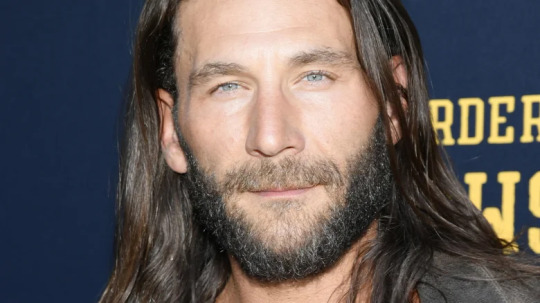
"Black Sails" is filled with many incredible exploits of pirate warriors as they battle on the high seas, but a behind-the-scenes achievement by one of the actors was almost as impressive as what was shown on screen. During a break in filming, the cast was having a good time together but needed some rum, so Zach McGowan went to rather extreme lengths to remedy the situation.
In order to gain access to the prized liquor in a room several floors up, the actor literally scaled the side of the building all on his own. When talking with Rotten Tomatoes, cast member Hannah New described the amazing sight, saying: "He did this like Spider-Man kind of thing where he climbed up these balconies … it's incredible, he does like, God knows how many chin-ups every day. So, he can just chin up these balconies."
After McGowan successfully got the rum and then made the way back down with it in his front pocket, the cast waiting down below were too awestruck to do anything but tensely watch. Fellow actress Jessica Parker Kennedy added: "And none of us videotaped it. I think we were all in such shock, it was so scary, I thought he was going to fall and break his neck and we would have to explain it to our producers the next day."
10. It took all season to film Luke Arnold's underwater scene
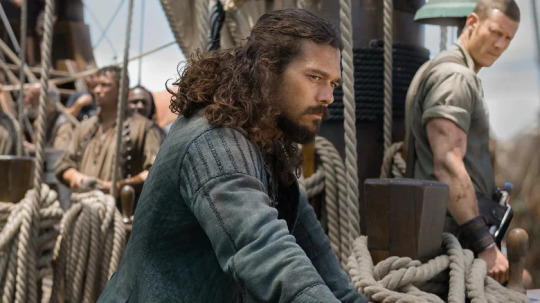
In the fourth season of "Black Sails," Long John Silver nearly perishes in the sea as he struggles to escape his sinking ship. Actor Luke Arnold must have been pleased that his character ultimately survived the harrowing experience, but filming the scenes was definitely not easy for the actor. Even though he was confident in the comprehensive training he received beforehand, Arnold still had to overcome a major fear of performing in those conditions.
When asked specifically about those tense underwater moments, he told Collider in a 2017 interview: "That was the beginning of hell that kept getting crazier as it went along. That took all season to shoot. We were in the water tank, from the beginning of the season, stuck underwater, all day." To his dismay, Arnold was right when he assumed it would take longer to finish than the filmmakers first thought, yet it was all worth it, as he added: "Right until the last couple of weeks, I was doing bits of the underwater stuff to make that whole sequence as spectacular as it is."
11. Luke Arnold received a special gift from a producer
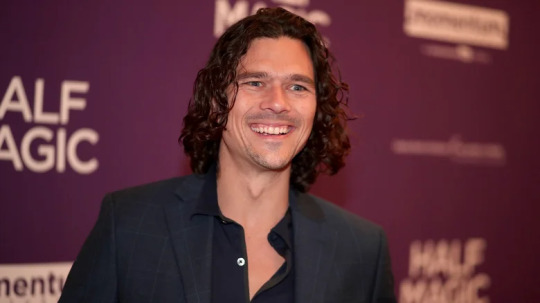
Luke Arnold was one of several major cast members of "Black Sails" who was in the show from the very beginning all the way through to the climactic finale. The actor very much enjoyed his time filming the series, so when he found a cherished memento from the early days, it was a big deal. In the same interview with Collider, he revealed: "We were shooting a scene in Season 4 that was back in Eleanor's office, and I found the piece of paper that I was writing the directions to find the Urca de Lima on, which was the very first scene we shot in Episode 103. Nina Jack, who was one of our producers on Season 4, got it framed and gave it to me as a gift, so I've gone away with that. That was amazing!"
On the other hand, there were parts of the series that Arnold did not remember so fondly, mostly from the difficulties that arose in pretending to have lost a leg. In this endeavor, he was able to use a crutch on screen, but the prop caused him so much discomfort that he grew to despise it.
12. Luke Arnold had a legless stunt double
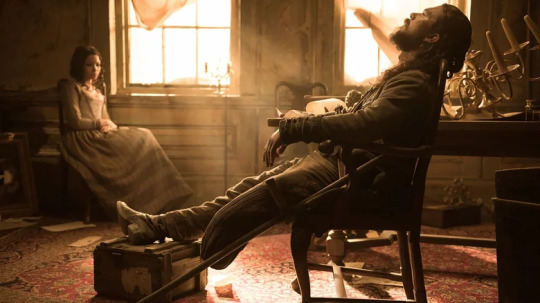
Once Long John Silver tragically loses his leg in "Black Sails," Luke Arnold had some difficulty filming scenes as the character, so he was grateful to have help from a stuntman named Ben de Jager who is also missing the limb. The actor told Collider: "It was great to have somebody who's gone through the experience of losing a leg. He did step in for a lot of stuff, mainly because it was so much easier to have him there. If you're shooting from behind or you're focusing on the foot, it's easier to have someone in who's missing the leg than to do it with me and spend a fortune on visual effects to change things."
Though Arnold certainly got along with de Jager, there also seemed to have been a little jealousy in sharing screen time for the role. The actor admitted that a downside for him was his absence in some major Long John Silver moments of the show.
13. The writers gradually decided to bring back Flint's lover, Thomas

For as dark as "Black Sails" can be throughout the series, it ended on a fairly happy note as the main character, Captain Flint, is finally reunited with the love of his life, Thomas Hamilton (Rupert Penry-Jones). Both men are sentenced to imprisonment on a plantation, yet all that matters to the pair is that they are together again. Viewers may have been somewhat surprised that Thomas had returned to the show given the fact that he was thought to be dead, but over time the writers decided that was not going to be his fate.
In an interview with The Hollywood Reporter in 2017, Jonathan Steinberg explained: "We had a sense in Season 2 when he died off-screen, that any character who dies off-screen, you're taking the word of the messenger as to whether or not it actually happened. We knew we weren't finished with him. And then at some point in Season 3, we realized it would be reasonably late in the series when he came back, so in Season 4 it felt right."
Source: Looper
192 notes
·
View notes
Text

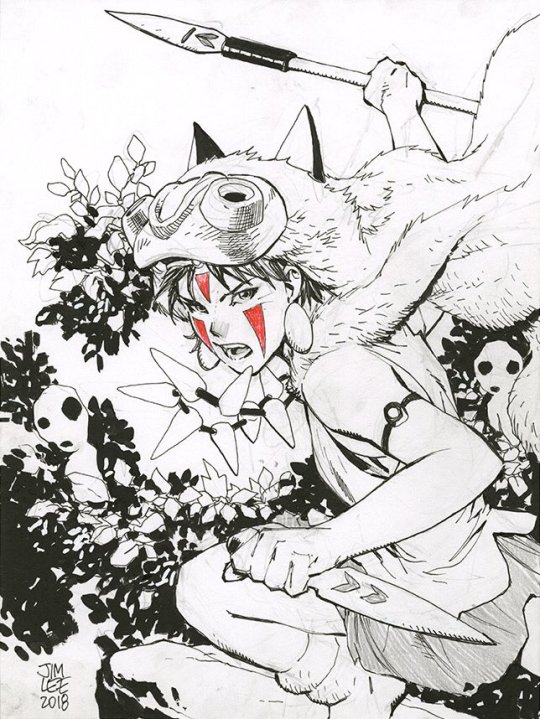
DEFENDER, PROTECTOR, & WARRIOR OF THE FOREST -- PRINCESS OF THE WOLF GODS.
PIC(S) INFO: Spotlight on San, the "Wolf Girl Princess," from the 1997 Japanese animated feature film from Studio Ghibli, "Princess Mononoke," directed by Hayao Miyazaki. Artwork/colors by Jim Lee, c. summer 2018.
"Lee has spoken about his love for manga and anime in many public forums. He reportedly cited manga styles as an influence in his iconic "Punisher: War Journal" series in the 1980s, and in recent years he has said that his kids have drawn his attention back to the genre.
During panels, con appearances and podcasts, Lee has often mused about how his daughters are more interested in manga and anime than Western superheroes.
"My kids, they draw huge eyes on all their figures," he said, laughing at the Canadian National Comic Expo in 2006. "What's up with that? Why is everything backwards? You don't want to put color on it?"
-- COMIC BOOK (Michael Hein), c. August 2018
Source: https://comicbook.com/anime/news/dc-comics-jim-lee-princess-mononoke-sketch.
#Princess Mononoke 1997#Studio Ghibli#Wolf Princess#Hayao Miyazaki#Anime#Jim Lee#Fantasy Art#Jim Lee Artist#Jim Lee Art#San#サン#もののけ姫#Mononoke-hime#Wolf Girl Princess#Studio Ghibli Films#Studio Ghibli Movies#1997#Princess Mononoke 1997 Movie#Japanese Animation#Animation#1990s#San Princess of the Wolf Gods#Ghibli#San Princess Mononoke#Fantasy Movies#Princess of the Wolf Gods#Fantasy Films#Epic Historical Fantasy Films#Fantasy#Miyazaki Hayao
26 notes
·
View notes
Text
New OC for Expats, let's go!
Ok, this wasn't even that hard! I was in the shower, and came up with a character sketch for my movie-star OC for Expats. What do you think? (Any similarities to real people, living or dead, are purely incidental).
Meet Elliot James. He is a Hollywood actor who got his start as a child star, but came to prominence when he appeared in a fantasy epic loosely based on events in early Medieval Britain, where he played a sweet, heroic squire who saved the day, but ended up giving his life in the process. Afterwards, he became a household name and in demand for everyone's epic or period piece anywhere, and while this was certainly very nice, it was somewhat disappointing to be typecast, so he tried to seek out other roles -- in indie films, horror movies, and genre cinema.
In rapid succession in his early 20's, he played a sick WWI veteran in a period piece with a plot like Flowers of Mordor, a prince in the medieval French history franchise Les Rois Maudits, a young Louis XIV, King Francis in a movie about Mary Queen of Scots (ok, yes, a lot of Frenchness here), and Nikolai Rostov in War and Peace. He also played Pip in Great Expectations, and Link in a cinema franchise of Legend of Zelda, and was one of the brothers in a multi-season Regency-era show similar to Bridgerton. He came to see his period piece and fantasy work as a "Jury duty" of sorts, but did it to please the fans and because he had some difficulty saying no. In the end, however, he put his foot down, and instead of taking the role of Jim Hawkins in Treasure Island, which he was all but being bribed to do, he insisted on auditioning for Blind Pew and Israel Hands.
Why does he get typecast playing young literary and historic characters, you may ask? Well, this is because after age 20, he looks like he essentially stopped aging. He is also short and slightly built, and looks like he stepped off a renaissance painting. He has striking hazel eyes that look like liquid gold, and naturally curly dark blonde hair.
In terms of personal history, he hails from South Dakota, from a long line of ranchers and early settlers to the area of Swedish and German extraction. (Hello, inspiration from Mr. Nisilë's white heritage). His mother raised him and his sister alone, and he has a very loving, down-to-earth and supportive family of origin. However, work as a child actor gave him a lifelong hair-pulling habit, to the point of trichotillomania at times, and he is completely unable to grow a beard of his own as a result.
In his personal life, he gets together with a fan named Marina who is an immigrant from Ukraine and has both Ukranian and Russian heritage. They connect over his upcoming work on War and Peace, and impending trip to Eastern Europe to film it. (This is obviously well before the present day). During his (very ample) free time, Elliot enjoys collecting and listening to vinyl records, attending live concerts, traveling as incognito as he realistically can with his distinctive looks, and watching off-off-Broadway plays (or whatever the LA analog is for this). Ironically, he has never been in a play himself, except for a school play at a very young age.
With his girlfriend and later wife, he is a total sweetheart, and his mental illness helps him understand hers. He is also a complete and utter goofball, slightly disorganized in his household and self care, and unassuming and slightly awkward whenever the cameras are off. The weirder the topic of conversation with him, the better.
His partner, Marina, works as a medical malpractice lawyer who defends doctors, and has a crazy, domineering mother who both loves and dislikes Elliot, and belittles his work behind his back, comparing him to old Soviet actors who she thinks are the true greats. However, she has no qualms about accepting gifts and financial assistance from him. (Guess who this is based on, haha).
Elliot never went to college himself, but he paid for the college education of his sister and Marina's law education. The only thing he asked for in return was that Marina and his sister share the particularly interesting things they learned whenever they could.
What do you think?
@konartiste @emmanuellececchi
11 notes
·
View notes
Text
Favorite New-to-me Films—March ‘24

(listed in order pictured above, L to R)
READ on BELOW the JUMP!
Forbidden Fruit (1921)
[letterboxd | imdb]
C.B. DeMille and Jeanie MacPherson’s second swing at this modernized Cinderella story about overcoming a bad husband, now with eye-popping fantasy sequences designed by Natacha Rambova. [Gif sets incoming!]
Mary Maddock (Agnes Ayres) does seamstress work and takes in laundry to support her layabout, no-goodnik husband. Her wealthy clients (Kathlyn Williams & Theodore Roberts) hatch a scheme to use a social event to settle a business deal with handsome young entrepreneur Nelson Rogers (Forrest Stanley). Mary accepts the job to keep Rogers occupied, with the unintended consequence of the two falling in love. When Mary’s husband makes a surprise appearance, the jig is up. But, after her husband’s chicanery has deadly consequences, Mary and Rogers are free to live happily ever after. CW: a pet bird is killed.
---
The Woman King (2022)
[letterboxd | imdb]
Giving an epic treatment to fitting subject matter, Gina Prince-Bythewood, Maria Bello, and Dana Stevens tell the story of the Agojie, a real-life group of warriors from the kingdom of Dahomey in West Africa, and General Nanisca (Viola Davis), a fictional leader of the warriors. The Woman King has a creative approach to history, to which a lot of critical attention has been paid—it’s certainly worth seeking education on relevant historical topics.
That said, it was a gutsy and risky proposition to tell a story tied into the Transatlantic slave trade focused entirely on the West African and Portuguese side for an American (and English speaking) audience. Also, as an avid fan of Xena: Warrior Princess and the Eddas/sagas of Iceland and Scandinavia, I appreciated the filmmakers taking a legendary approach to this location and time period. In its deliberately extra-historical engagement with history, The Woman King also brought to mind for me Senegalese filmmaker Ousmane Sembène‘s Ceddo (1971), which I highly recommend. (Obviously the films have wildly different tones/styles tho!)
As you might imagine from the description, heavy CWs for violence (including SA), blood, and slavery.
---
Why Change Your Wife? (1920)
[letterboxd | imdb]
A month ago, I wouldn’t have believed you if you told me that I’d be putting not one but two DeMille movies on my new-to-me favorites list! I initially watched them as reference for the cosplay I mentioned in the last monthly round-up post, but ended up enjoying both! Often there are elements of DeMille’s films that hamper my ability to enjoy them fully, whether it’s goofy class politics (hello Saturday Night), racist depictions (hi The Woman God Forgot, which I also watched for the first time this past month), or that I simply rarely enjoy christian bible epics.
That’s not to say Why Change Your Wife? is somehow perfect—it features pretty sexist attitudes. But, having learned a little bit about DeMille’s unconventional marriage, I see it less of a story of wives failing and more of a story about how two people who have a solid partnership can lose themselves when they lose each other. Here I’m referring to the first part of the film, before Swanson’s Beth and Meighan’s Robert get divorced. Beth isn’t being true to herself when she’s on her mental-improvement kick—there are sufficient details thrown in that show that she and Robert have drifted apart and she’s responding to it by morphing into a maiden aunt type. The film could’ve made Robert’s role in their marriage’s demise a little more overt, but I do think DeMille and screenwriters Olga Printzlau, Sada Cowan, and William DeMille must have been concerned about the American public’s response to a story that normalizes divorce in 1920. For context, we didn’t have no-fault divorce here in the US until the 1970s.
Anyway, why should you watch it? Gloria Swanson and Bebe Daniels offer fun and energetic characterizations as the two Mrs. Gordons, and they share a pretty wild fight scene. The costumes by Natacha Rambova are funky and interesting. The film features an absolutely adorable dog too! (If anyone recognizes the dog please LMK!) [Gif sets for this film are also on the way!]
---
Intohimon vallassa (1947)
[letterboxd | imdb | ELONET]
Teuvo Tulio don’t miss.
The heir to the biggest farm in the county, Aino (Regina Linnanheimo), is forced into an arranged marriage, but the man she really loves, Olavi (Kullervo Kalske), sticks around and becomes the town blacksmith. Years pass and Aino’s husband becomes an alcoholic and an abuser. Olavi keeps his distance as Aino’s marriage implodes in a particularly disturbing fashion. CW: domestic abuse, alcoholism, implied death of dog
---
Teenage Mutant Ninja Turtles: Mutant Mayhem (2023)
[letterboxd | imdb]
Look at me watching more than one movie this year that was made in this century! Anyways, I’ve been a turtle fan as long as I can remember (photographic evidence below) and I love that the comics have been re-adapted so well in the last 15 or so years for younger generations. (The 2012 show is very cute btw, worth checking out especially if you have kids.)
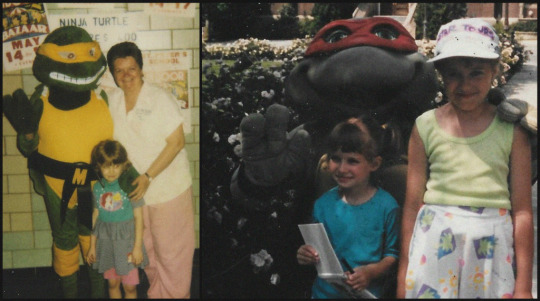
This take features a unique and kinetic animation style with an accessible story touching on what makes someone an outcast and how both adults and kids can navigate that. Mutant Mayhem features probably my new favorite depictions of April and of Splinter. Also, even though the non-turtle characters are almost all celebrity voice actors, the voice acting quality is very high.
---
Montana Moon (1930)
[letterboxd | imdb]
Sweet romantic story with comedic elements about a millionaire’s willful daughter (Joan Crawford) who, fleeing an awkward situation on a train ride with her family, runs into a cowboy (Johnny Mack Brown). The two quickly fall in love and are married, but the newlyweds face challenges when the differences in their lifestyles come into sharp relief. I love Crawford’s costuming and styling in this and her performance elevates the material. There are extended sequences with classic country-western music tho, so if that grates on you, you might want to take a pass on this one.
---
Leda – The Fantastic Adventure of Yohko (1985)
[letterboxd | imdb]
Yoko Asagiri is a young girl struggling to confess her feelings to the boy she likes. She decides to confess via a song she composed herself, but the song turns out to be a key to another world. Yoko teams up with a talking dog and a tiny warrior girl with a giant robot to fight the villainous Zell, who wants to use Yoko’s song to conquer her world. The animation and designs are top-notch as is the music. I personally enjoyed all of the Oz vibes suffused throughout the OVA.
---
Tomatos Another Day (1934)
[letterboxd | imdb | Eastman House]
Also known as “It Never Happened,” this is ostensibly a short film about a woman carrying on an affair and said affair being discovered by her husband. What Tomatos Another Day actually is is a send up of early talkies conceived and executed by independent filmmaker James Sibley Watson Jr. and collaborator Alec Wilder. If you’ve been around my blog for a while, you probably already know that I love Watson’s Fall of the House of Usher (1928) [Gifs/Stills]. However, I haven’t seen much else of his work! Thankfully, Eastman House has preserved and digitized a couple of his films and I plan on watching more soon. The link above has the short film with an introduction and outtakes!
---
Past Lives (2023)
[letterboxd | imdb]
Past Lives is a quiet but emotionally-rich love story by Celine Song that spans decades but also a single eventful week. I loved the way that the story was structured and how much the film relied on thoughtful pauses to communicate complicated emotions. The actors, Greta Lee, Teo Yoo, and John Magaro, all put in great work here. If you haven’t seen it yet, but plan to watch it, prepare to cry a bit.
---
The Mind Reader (1933)
[letterboxd | imdb]
Warren William plays a carny with a different gimmick for every town in the midwest. When the Depression affects his take, he and his cohorts, Frank (Alan Jenkins) and Sam (Clarence Muse), come up with a new scheme: fortune telling. As Chandra the Great, the crew start to rake it in, but when Chandra falls for an upright citizen (Constance Cummings), the scheme and their freedom is put in jeopardy.
I’m not accustomed to William playing this particular brand of sleazebag, but he really kills it as Chandra/Chandler/Munro. I appreciated how creative and adventurous the cinematography and editing is—not an especially common trait for pre-code films. I also made some still sets for the film!
---
Honorable Mention: Hard to Handle (1933) [letterboxd | imdb]
This film gets honorable mention because while I didn’t think it was particularly good, a few call outs are deserved. The bad: the plot was unnecessarily convoluted and the recurring sequences with fat people were iffy at best. The better: Ruth Donnelly shines as the comedically base mother of Mary Brian and she even gets to do a bit of physical comedy. Donnelly, Brian, and Cagney have a nice chemistry together throughout. In terms of costuming, the matching outfits of Brian and Donnelly are funny, but made funnier by the sheer quantity of mother-daughter ensembles they wear. The neutral: the film is packed with topical Depression-era references: notably Florida investment swindles and trends like dance marathons and the grapefruit diet. All-in-all, the filmmakers could have done less and achieved more.
---
The only big post I completed this month was a massive undertaking: Lost, but Not Forgotten: Omar Khayyam / A Lover’s Oath and a timeline for the film’s production and release.
Otherwise, I made themed gif and still sets from:
Torture Garden (1967)
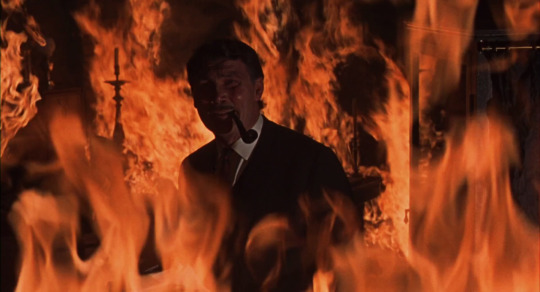
The Marriage Circle (1924)
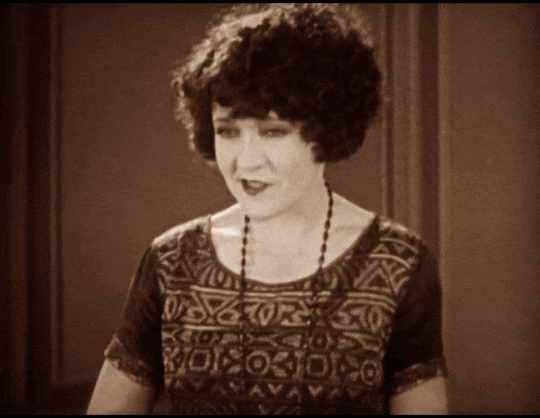
Le Altre (1969)

The Mind Reader (1933)
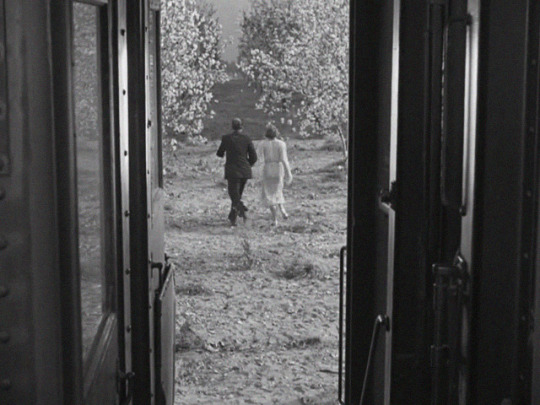
As for April, the cosplay I mentioned should be up very soon. If I have the time, both Lost, but Not Forgotten and How’d They Do That should have new installments posted and I have a few movies/shows on my themed gif/still agenda.
---
☕Appreciate my work? Buy me a coffee! ☕
#month in review#roundup#2020s#1920s#1930s#1940s#1980s#american film#independent film#finnish film#japanese film#japanese animation#animated movies#animation#anime#teuvo tulio#cecil b. demille#gina prince bythewood#classic film#classic movies#film#silent film#silent era#cinema#film recommendation#movie review
8 notes
·
View notes
Text
ESSENTIAL GAY HISTORY MOVIES (according to me, with a focus on the controversial)
The Wizard of Oz (1939) - Included because I actually met a young queer person who didn't believe me that this is a historical lgbt movie. I'm sorry but if you haven't seen this I'm revoking your gay license.
The Rocky Horror Picture Show (1972) - Another one I'm including just in case someone hasn't seen it and needs a reminder to do so (I know teenagers read my blog.)
Pink Flamingos (1972) - A John Waters movie. His films are bizarre, gross comedies and unlike any others.
Female Trouble (1974) - Another John Waters feature, this one has one of my favorite lines from any movie, "son, why don't you stop fooling around with these straight women and find yourself a nice queer to settle down with?" (paraphrased)
Desperate Living (1977) - My favorite John Waters picture, this one is bordering on epic fantasy. It's set in a shantytown in the woods, populated by gay criminals, ruled by an evil queen.
Dog Day Afternoon (1975) - Based on a true story about a guy who robbed a bank to pay for his girlfriend's gender reassignment surgery.
The Forbidden Zone (1980) - THE OINGO BOINGO MOVIE. Not only is the soundtrack Danny Elfman's best work (in this writer's humble opinion) but it's also a beautiful movie about love for the controversial and perverse. Obviously it was made by queers and people of color, but they were trying to be offensive, so they do shit like, have characters in blackface, but also black actors, sometimes in the same scene (an artistic choice as confusing to a modern audience as it was when they made it.)
Killer Condom (1996) - A German murder mystery/comedy about a gay cop. Very corny and lighthearted, it feels more like an 80s movie.
Velvet Goldmine (1998) - A sweet and poignant romance between two male rockstars. This one feels like it came from within my own heart.
Cruising (1980) - Another murder mystery, this time centered around a bisexual cop, only this one isn't a comedy. They shot footage in actual gay bondage bars in New York, but the hardcore stuff got cut because I guess god hates us ( lol). You can still tell in some scenes they're really fisting dudes and shit.
The Gay Deceivers (1969) - Two straight men pretend to be a gay couple to dodge the draft. They move to a gay neighborhood and have to blend in with their neighbors.
Feel free to suggest more, I'm sure there's a lot I didn't think of.
313 notes
·
View notes
Text
Bluebeard's Castle / a novel by Anna Biller

I first encountered polymath auteur/cinéaste Anna Biller when she screened her Cal Arts thesis film Three Examples of Myself as a Queen (1994) at Beyond Baroque Literary/Arts Center in Venice, California. The film was a tour-de-force - a straight-faced hilarious surreal camp fantasy musical that Biller wrote, starred in, directed, costumed, composed and set-designed. Around that time I was also lucky enough to catch her live stage production, The Lady Cat, in which she starred as a be-whiskered furred sexy feline. Those glorious offerings have since been followed by films such as The Hypnotist (2001), A Visit from the Incubus (2001), Viva (2007) and The Love Witch (2016), each of which has been a gleaming iconic/iconoclastic constellation in the Anna Biller firmament.
Now, years later, I've just finished the audio version of Biller's debut novel, Bluebeard's Castle (Verso Fiction, 2023). Fascinating, complex and interwoven with stealth historic, cinematic and literary hat-tips, the novel absolutely felt like an Anna Biller production. Biller's indelible mise en scène over the years has been so gloriously signature with its unapologetic embrace of nostalgic high fashion and cinematic kitsch that the novel unspooled in my head as a dazzling film punctuated by bits of quintessential Biller-esque theatrical side-business: naked men painted white posing as statues; costumed dancers performing a sensual pas-de-deux between a caterpillar and a butterfly.
The book is a true-to-form romance novel that follows the erotic evolution of romance novelist Judith as she is drawn ever deeper into the gravitational pull of a devilishly handsome cad. But Biller subverts the genre by confronting the reader with the nightmarish horror of the narcissistic demonic, all the while seducing us with inescapable eroticism, daring us not to turn the page (or keep listening to the audio - convincingly read with Gothic intensity by Samantha Hydeson).
The juxtaposition of romance novel genre and rigorous razor-sharp psychological insight of Bluebeard's Castle made my head spin. In vivid Biller-esque fashion, the dark momentum of the work made me feel like I was being strangled with a gold satin cord and lowered into a red velvet lined coffin in a symbolic death. This is a filmmaker's novel with big dreamlike technicolor impact and Hitchcock-like precision.
I read somewhere that Biller had originally pitched Bluebeard's Castle as a film and, rather than wait for the capricious wheels of cinematic fate to spin in her favor, took to the novel form and made it happen.
Here's holding out hope that this scintillating work gets a green light. Would be epic.
15 notes
·
View notes